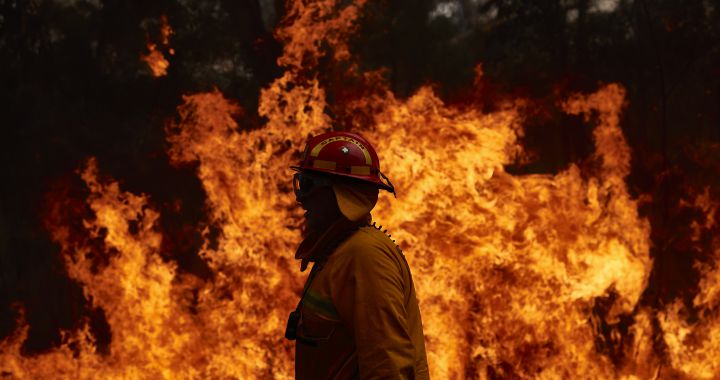Last January, LOS40’s El Eco woke up to optimistic news, something unusual when talking about environmentalism: the hole in the ozone layer, one of the biggest environmental concerns of recent decades. , closes itself. A phenomenon that can be explained by the abandonment of the use of chlorofluorocarbons (CFCs), main causes of its deterioration, since its ban in 1987.
Today, a new study emphasizes that you should not throw your bells on the fly. Researchers from the Massachusetts Institute of Technology (MIT) have shown that wildfires are a problem for the ozone layer. Specifically, the researchers analyzed the great fire which swept across eastern Australia between December 2019 and January 2020, during what has been dubbed ‘the black summer’.
The research, which was published in the prestigious journal Nature, identified a new chemical reaction caused by smoke particles and analyzed its effects. And they are worrying: this gigantic fire has contributed to reducing between 3 and 5% total ozone in the mid-latitudes of the southern hemisphere, in regions that cover Australia, New Zealand and much of Africa and South America. Specifically, the aforementioned particles have enlarged the Antarctic ozone hole by 2.5 million square kilometers, or 10% of its area compared to the previous year.
Global warming, the problem
“The effect of wildfires had not previously been factored into ozone recovery projections and I think this effect may depend on whether fires become more frequent and intense as the planet grows. heats up”, explained the American scientist. Suzanne Solomon, one of the people in charge of the study.
The problem is that, despite the fact that CFCs are no longer used, the hydrochloric acid (HCl) they contain remains in the atmosphere. for decades. In principle, as long as the chlorine remains in the form of HCl, it has no chance of destroying the ozone. However, if the HCl breaks down, the chlorine can react with oxygen to form chlorine monoxide, which destroys the ozone layer. It is precisely this chemical reaction that causes forest fires, as certified by the study published in Nature.
“This is a sudden fall for scientists studying the stratosphere,” Solomon acknowledges. “No one expected the fires to have such an effect.” What will happen in the future? “Now we are in a kind of race against time. Hopefully the chlorine-containing compounds have been destroyed before the frequency of fires increases due to climate change.”

